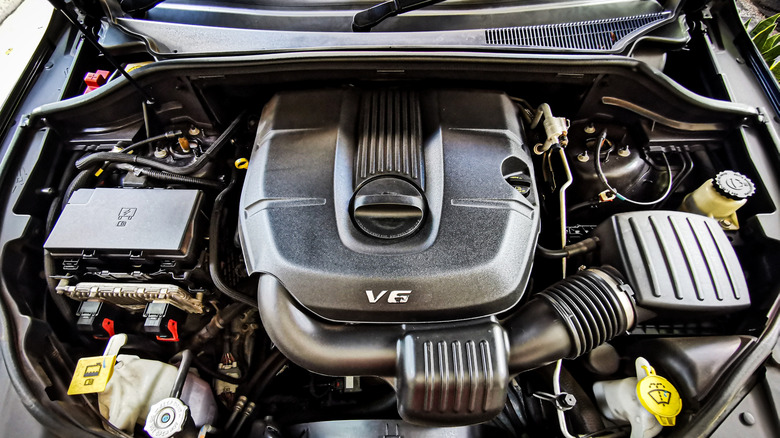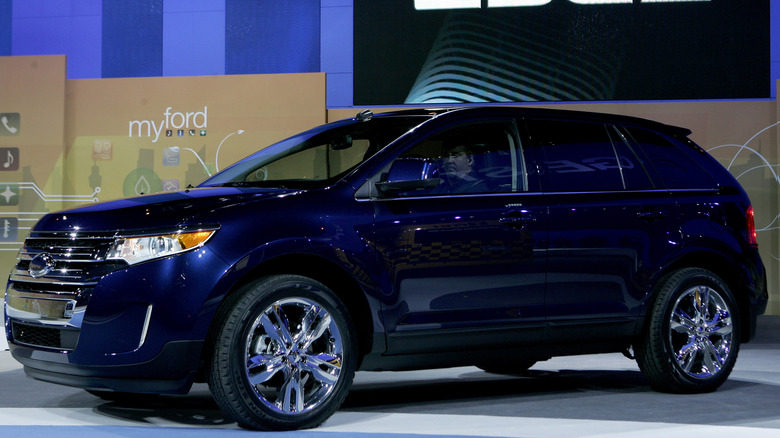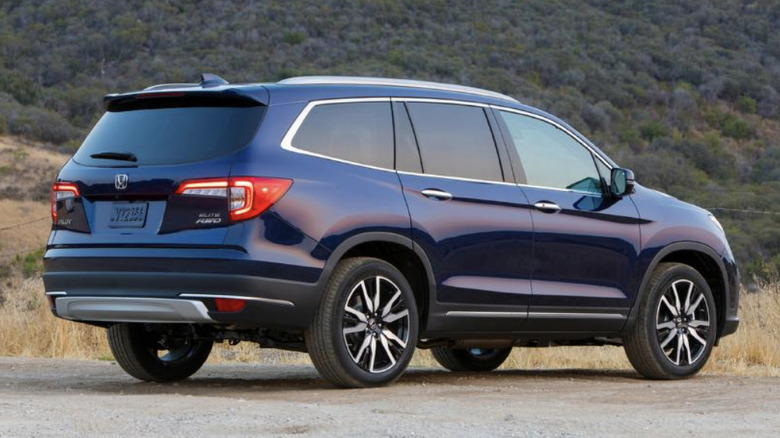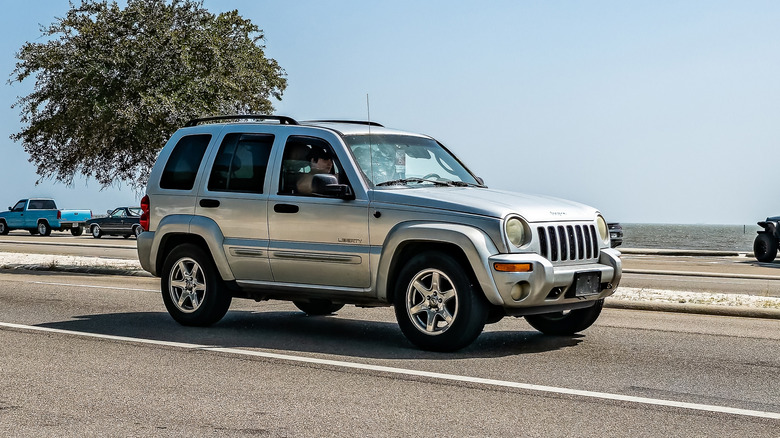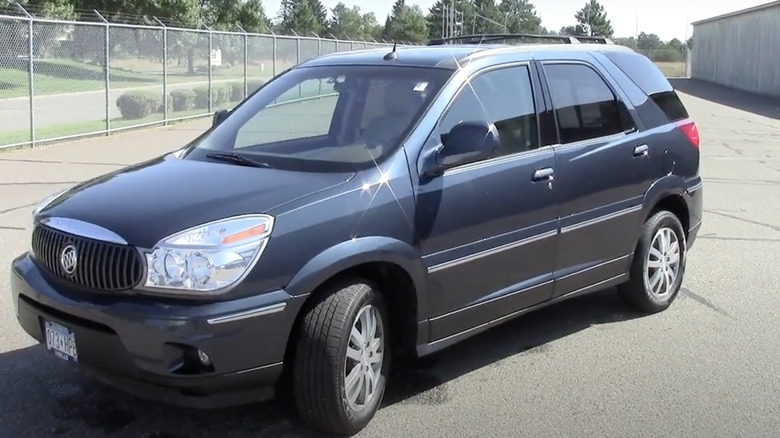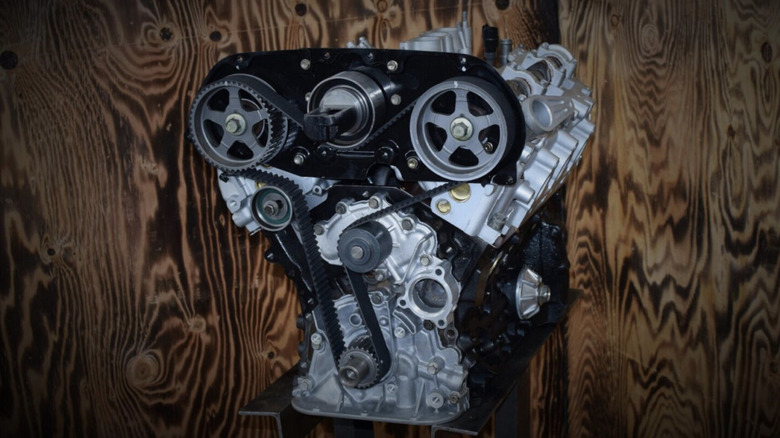5 Of The Worst V6 Engines Ever Made
A V6 engine is a solid choice because it delivers more power than a four-cylinder without burning as much fuel as a V8. There's a catch, though: not all V6 engines are reliable. Some are able to run smoothly for years, but there are others that are just too problematic. On paper, these engines might look impressive, with high horsepower and advanced features. But in reality, they break down unexpectedly and can cost you a lot more than they're worth.
And let's be honest, as a car owner, engine problems are the last thing you need. Sure, modern engines are built to last longer and run more efficiently than older ones and with proper care, a good engine can serve you for a very long time. On average, that could be somewhere around 200,000 miles. However, not every engine will keep running efficiently for that long.
To help you avoid the hassle, we've rounded up some of the worst V6 engines ever made. We're talking about serious design flaws. Some have timing chains that snap and destroy the engine entirely, while others burn oil too quickly; you may just end up spending a ridiculous amount of money on engine oil to top up. So, whether you're about to get a car or just curious about what to avoid in general, this guide will save you from making an expensive mistake.
Ford 3.5L Duratec V6
Although Ford engines are usually reliable, this was one of the few Ford got wrong. Found in the 2007 through early 2011 Explorer, Flex, Taurus, Fusion Sport, and Edge, this engine received awards when it first came out. However, Ford's decision to place the water pump inside the engine would prove to be a maintenance nightmare for owners.
Unlike most engines, where the water pump is mounted externally for easy replacement, Ford decided on an internal chain-driven water pump. The problem wasn't just that the water pump could fail; after all, mechanical parts eventually wear out. The real issue was what happened when it did fail. The bearings inside begin to wear down, causing the pump to wobble and damage the seal. Once the seal begins to leak, coolant enters the crankcase, where it mixes with engine oil and circulates throughout the system. This mixture results in a thick, contaminated fluid that affects the engine's performance.
Coolant-contaminated oil cannot properly lubricate critical components such as the bearings, cam journals, and rod bearings. As a result, these components wear out more quickly than they would with clean oil. Unfortunately, for many owners, by the time warning signs appeared, such as coolant loss or overheating, significant damage had often already occurred. If not addressed immediately, while driving at highway speeds, the engine could seize or lose power gradually until it stops running. What's worse, replacing the water pump is more expensive than with most engines because of its internal placement. Frustrated owners of cars equipped with this engine, like Flex and Edge, filed a class-action lawsuit against Ford. However, the lawsuit was dismissed, leaving many owners to deal with very expensive repair costs, which could run north of $2,000.
Honda 3.5L J35Y6
The J35 V6 series, in general, is regarded as one of Honda's most reliable engines. However, in November 2023, Honda recalled nearly 250,000 vehicles due to an engineering mistake that could lead to premature engine failure. The recall affected certain Honda and Acura models like the Pilot, MDX, and TLX, all powered by the J35Y6 specifically. Furthermore, a National Highway Traffic Safety Administration (NHTSA) investigation suggests the issue may be more widespread, potentially affecting up to 1.4 million vehicles.
The problem stems from a machining error during crankshaft production. According to Honda, an improper setting in the crankshaft grinding process resulted in crank pins with a convex shape that was out of specification. As a result of this flaw, the connecting rod bearings wear out much faster than they should. Honda has received 1,450 warranty claims related to this issue but maintains that only about 1% of the recalled engines are expected to have the defect.
Nonetheless, the consequences of this defect can be severe. If a connecting rod bearing fails, the engine may stall, overheat, or suffer catastrophic internal damage. In extreme cases, engine seizure could cause a loss of power while driving, increasing the risk of an accident. Sure, Honda, in its recall program, offered to fix or replace the affected engines at no cost to owners. Despite the recall, NHTSA has received at least 173 reports of engine failures in vehicles not originally covered, prompting a formal Recall Query (RQ24-013) in November 2024. This investigation is examining 2016 to 2020 Honda and Acura models to determine if the recall should be expanded. If NHTSA finds that the defect extends beyond the initially recalled vehicles, Honda may be required to issue another recall.
Chrysler 3.7L V6
The Chrysler 3.7L V6, under the hood of some Jeep and Dodge models, has a reputation for being unreliable. One of its biggest problems is valve seat failure. Normally, valve seats stay securely in place inside the cylinder head, but in this engine, excessive heat can cause them to come loose. When that happens, compression drops, misfires start, and the engine idles rather roughly. If the seat completely breaks apart, it can damage the piston and cylinder, leading to total engine failure.
Then there's the heat problem. This engine has a flawed piston ring land design and restricted oil drain-back passages, which means it gets hotter than it should. That excess heat breaks down the oil faster, causing sludge buildup that clogs oil passages and restricts lubrication. Over time, that leads to overheating and accelerated wear. A clogged PCV valve only makes things worse by trapping blow-by gases and thickening oil deposits, speeding up sludge formation.
On top of that, there's the single-valve spring design. Most truck engines use dual-valve springs, which last longer, but Chrysler went with a single spring per valve, making them more likely to break. If a spring fails, it can cause loss of compression, and in the worst cases, the valve can drop into the cylinder and wreck the engine.
The hydraulic lash adjusters (lifters) are also problematic. They're supposed to keep the valves running smoothly, but sludge and carbon buildup can make them stick or collapse. When that happens, you'll hear a ticking noise or experience rough idling. If a lash adjuster gets stuck, it can knock a rocker arm loose, shutting down a valve and making the engine run even worse.
GML 3.4L V6
This engine, featured in cars like the Chevrolet Impala, Pontiac Grand Am, and Buick Rendezvous, has a well-earned reputation for trouble. A lot of the problems with this engine come down to poor gasket design and GMs use of Dex-Cool coolant, which ended up doing more harm than good.
GM introduced Dex-Cool, an OAT (Organic Acid Technology) antifreeze, in 1996 as a "lifetime" coolant, promising better protection than traditional green antifreeze. However, by the early 2000s, many GM owners were dealing with failed gaskets, especially in cars with the 3.4L V6. The real issue came when coolant levels dropped, letting air into the system. This turned Dex-Cool acidic, eating away at the black plastic gasket carriers and causing leaks. It was later revealed that Dex-Cool's 2-EHA additive actually weakened the gaskets, making the problem even worse.
For owners, the consequences were costly. Replacing a failed intake gasket could run anywhere from $800 to $1,500, and a head gasket job could cost over $1,000 to $3,000— especially if overheating has warped the aluminum heads. The situation got so bad that GM was hit with a class-action lawsuit, and in 2008, they settled by agreeing to reimburse intake gasket repairs for certain model years.
Toyota 3VZ-E
Toyota has built some of the most reliable cars on the road, but the 3.0-liter 3VZ-E V6 is one of the more troublesome engines the company has ever produced. A design flaw in the cooling system causes uneven coolant circulation, creating hot spots that accelerate head gasket wear. On top of that, the exhaust crossover at the back of the engine adds even more heat to an already stressed area. As the gasket weakens, coolant can leak into the cylinders, leading to overheating.
Then there's also the lack of power. Despite its 3.0-liter displacement, the 3VZ-E only puts out 150 horsepower and 180 lb-ft of torque, which is not great for a heavy 4Runner or pickup. Owners often complain it feels sluggish, earning it the nickname "3.slow." The timing belt is another weak spot. Unlike Toyota's later V6s that use a timing chain, the 3VZ-E relies on a belt that must be replaced every 60,000 miles to avoid sudden failure. Fortunately, it's a non-interference engine, so a snapped belt won't do any additional damage. However, it will leave you with some expensive repairs.
That's one thing all these engines had in common: expensive repairs. Each of these cars came with factory flaws that made owning one a pretty onerous experience. Sure, some owners managed to keep theirs running by being diligent with maintenance, but for many others, these were engines that caused so much frustration.
